|
Did you know that “dark matter,” a discovery which transformed physics and astronomy, was discovered by a woman named Vera Rubin? Or that someone named Jemma Redmond invented a way to use a 3-D printer to make living tissue for transplants?
Neither did this writer, until she read their obituaries. There are many amazing women scientists. Some have received important recognition in their fields. But they are not the national figures and role models that they should be.
The establishment media occasionally laments about the deficit of women in hard sciences, the so-called STEM fields, and gives the impression that women scientists have yet to make their mark. Yet all along women—though few in numbers—have been among the very top scientific achievers and visionaries. It is a telling comment on the undervaluing of women today that these innovators come to national attention not during their lives, but through the news of their deaths.
Gender bias remains a marked feature of 21st century capitalism. Girls begin to think they are not as smart as boys at age 6 (Science, January 2017). The common images of women in the major media are “the glamorous sex kitten the sainted mother, the devious witch, the hard-face corporate and political climber,” according to a 2009 UNESCO report.
Vera Rubin and Deborah Jin, who died in 2016, were each considered for the Nobel Prize in physics, the science with fewest women–11.1 percent. But this highest prize was not awarded to them. Of the 204 Nobel laureates in physics only two have been women—and the first and best-known, Marie Curie, was included at the insistence of her husband Pierre, for their joint work.
This raises many questions. How many women are making major contributions today to science, math, the social sciences, political and social life without their work and their lives receiving visibility? How many women are there worldwide with special gifts who will never have a chance to express them? What can be done to reverse this?
But let us return to these women scientists. Culled from obituaries that appeared in 2016, the article focuses on some of the women innovators who made major contributions in the physical sciences that are mostly men-only bastions.
Their obituaries reveal their astounding contributions. But they also uncover the barriers many faced, and the burdens they carried throughout their careers due to gender. All mentored other women and advocated for women in science. But the greatest advocacy would have been to learn about these women and appreciate their accomplishments as they made them.
We reclaim these women and tell of what they did so that they may take their rightful place in people’s history.
She discovered dark matter
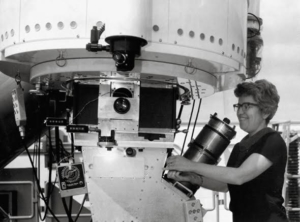 Vera Rubin Vera Rubin discovered that unobservable “dark matter” makes up some 25 percent of the universe’s substance, while the visible kind that we know makes up only 5 percent. Colleagues saw this is one of the great discoveries of the 20th century, and may even require a modification of Einstein’s theory of general relativity.
While Rubin received almost every other award, the Novel Prize escaped her. “She remains one of the clearest examples of a woman in scientist who accomplished Nobel-worthy work but who never received a call from Stockholm,” said Scientific American.
Rubin loved astronomy as a child but was discouraged by teachers. She graduated from all-women Vassar College as the only astronomer in her class. She hoped for a Ph.D. from Princeton. but the astrophysics graduate program wouldn’t even send her a course catalogue because they didn’t admit women.
So she got her doctorate from Georgetown University while raising four children. Denied study at a major astronomy school, she explained, “I had to learn an enormous amount by myself.”
There were times when she was chastised and humiliated by senior astronomers, she said. She was so excited once to be asked to meet with prestigious astrophysicist George Gamow. The meeting, however, took place in the lobby because women weren’t allowed in the offices upstairs.
In 1965 she joined the terrestrial magnetism department of the Carnegie Institution, only to find that she had to fight for access to its 200-inch telescope on California’s Palomar Mountain. When she finally got there, the facility had no women’s restroom. She taped an outline of a woman’s skirt to the man’s image on the restroom door, creating a restroom she could use.
Her response to such treatment? “Don’t let anyone keep you down for silly reasons such as who you are…And don’t worry about prizes and fame. The real prize is finding something new out there.”
Rubin sought to research “a problem that nobody would bother me about.’” She began to map the distribution of mass in spiral galaxies by measuring how fast they rotated. When she found irregularities in rotation speed, “great astronomers told me it didn’t mean anything.” Pursuing these anomalies in galaxy rotation is what led her to discover dark matter.
Of her monumental discovery that only 5 percent of the universe is luminous, Rubin was known to say, “I’m sorry I know so little. I’m sorry we all know so little. But that’s kind of the fun, isn’t it?”
She created a new particle
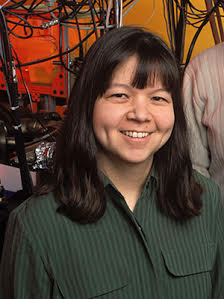 Deborah Jin Deborah Jin is considered a giant in quantum physics. She created a new kind of particle in the coldest spheres of matter. Her name was also mentioned as a candidate for a Nobel Prize in physics.
Bose-Einstein condensates are states of matter predicted decades ago by Albert Einstein and Indian physicist Satyendra Nath Bose, but never observed. In 2001 Jin’s colleagues Carl E. Wieman and Eric A. Cornell won a Nobel Prize for actually creating one. They welded together gas atoms at a few degrees above absolute zero to form a single coherent particle. Jin conducted many of the early experiments characterizing the gas.
In 2003 Jin accomplished a major feat of her own: creating the first fermionic condensate, a similar new state of matter made from a different particle. Comparing Jin’s work to his own, Weiman said it was “a lot, lot harder.” He added, “What did come out was more impressive than I thought would be possible.”
In 2008 she and a colleague went from atoms to creating the first ultra-cold gas of polar molecules. While her work doesn’t have direct application, it could boost the development of new materials like superconductors to convey electricity more efficiently.
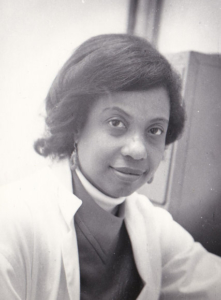 Yvette Fay Francis-McBarnette
She prolonged the lives of children with sickle cell anemia
Yvette Fay Francis-McBarnette broke ground treating sickle cell anemia. Using antibiotics, she prolonged into adulthood the lives of thousands of children with this chronic illness who were never expected to survive to adolescence. Her treatment anticipated a protocol established years later.
In 1946, Francis became the second Black woman to enroll at the Yale School of Medicine. She specialized in pediatric hematology, and went on to direct a sickle cell clinic at the Jamaica Hospital in New York City.
Sickle Cell Disease is a genetic order affecting mostly Black people and people of Mediterranean descent. Francis was first exposed to the disease during a pediatrics residency in Chicago, treating an African-American population that had migrated from the South. “I went home and tested all my relatives,” she said.
In 1966, she and colleagues formed a foundation to research the illness. By 1970, five years before New York City required infant testing; her clinic had already screened 20,000 children and was prescribing antibiotics. By the time a 1993 New England Journal of Medicine article confirmed the efficacy of the antibiotics, Francis had treated thousands.
One patient, Cassandra Dobson, said, “I stayed on antibiotics for 35 years. If I hadn’t, I would’ve died. I was told I was going to die at 5, at 10, at every milestone of my life.” Dobson had children, earned a doctorate in nursing and now teaches at Lehman College in the Bronx.
Francis retired in 2000. Many of her pediatric patients, now adults, did not want to leave her care. At 53 she entered a residency program in internal medicine and a fellowship in hematology so she could continue to treat them.
She created living tissue with a printer
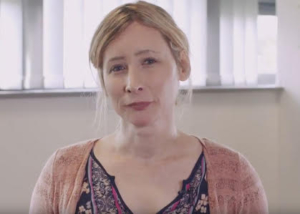 Jemma Redmond Jemma Redmond was an innovator in the field of 3-D tissue printing—the creation of tissue-like groupings of living cells made with a specialized 3-D printer. Surgeries using bio printing are in their first trials.
Redmond had five patents pending for her breakthroughs in creating these complex biological tissues from scratch out of “bio-ink.” Her main breakthrough was a printer that could keep cells alive as they were printed. She also invented a way to print with up to 10 materials at once, and was researching ways to lessen the cost of bio printing.
Redmond was motivated by the lack of organs available for those who needed transplants. Born intersex and infertile, she sought to print a functioning uterus for those who wanted to have children. Her first
printed project was an extended middle finger, for those who doubted her and called printing organs of such complexity impossible.
In an obituary on the website intersexday.org, Redmond’s partner Kay Cairns writes, “Jemma was 38 when she died. She spent those years fighting back against society’s expectations of her. ‘Be a good boy, get a stable job…’ Jem figured out she was infertile, which led to her discovering she was intersex. She’d always wanted kids…a ‘mini-me.’ It was a crushing realization for her, along with finding out about her hidden medical history, and dealing with constant anxiety from street harassment as someone visibly different. …
“Jem’s imagination was unstoppable, and she stopped at nothing. At the time we met, in 2012, Jem was using kitchen stoves as incubators for her printers. She came to live with me and the printers came with her. Eventually she found a hacker-space to work from. I visited one night for a tour and cycled home with her and a 3-D printed octopus in hand.”
She shifted paradigms in genetics, biology and evolution
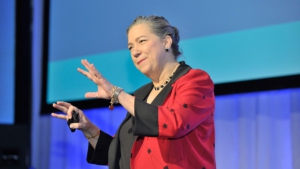 Susan Lindquist Susan Lindquist was one of world’s leading experts in protein folding. She showed how misfolded proteins can lead to mad cow and Creutzfeldt-Jakob disease, as well as positive evolutionary traits. Her work helped increase understanding of gene functioning and degenerative diseases like Parkinson’s and Alzheimer’s disease.
“Her work has provided paradigm-shifting insights into the most basic aspects of cell biology, genetics and evolution,” said the Genetics Society of America.
Lindquist was professor of biology at MIT and one of the first women to lead an independent biological research firm.
While studying for her doctorate at Harvard in the 1970s Lindquist became interested in how genes provided the information to create a protein. She first studied fruit-fly tissue, but changed her focus to yeast because the cells were simpler and easier to study. She was warned that she could ruin her chance for tenure by switching organisms, but dismissed the warning, she said, because as a woman, she never thought she would get tenure. She called this a “positive aspect of gender inequality” because “it allowed me to be fearless….My highest aspiration then, if I really did well, was to have a corner of a lab and write grants under the auspice of a male professor.”
She clarified the biology of memory
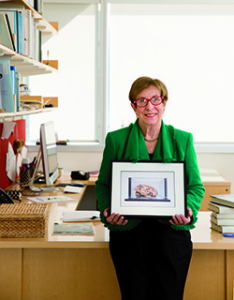 Suzanne Corkin Suzanne Corkin discovered that the brain’s hippocampus is a key site of long-term memory consolidation, adding clarity to the biology of memory and its disorders.
A professor of brain and cognitive science at MIT, she directed the Behavioral Neuroscience Laboratory. She authored or co-authored some 150 research articles and 10 books. She is best known, however, for her research on amnesic patient H.M. (Henry Molaison), who lost the ability to create new memories at age 27 after brain surgery to control severe seizures.
Corkin began to study H.M. as a graduate student, continuing until after his death in 2008. She made hundreds of studies, providing a detailed picture of how the surgical legions affected H.M.’s memory. Her work helped settle a debate about the function of the hippocampus in retrieving and reliving past experiences. Corkin found the hippocampus to be critical in these tasks.
“She was able to take this single case and do such meticulous work on the anatomy and its effects on memory that it helped settle these questions,” said Morris Moscovitch, professor of psychology at the University of Toronto. “That is one hallmark of her work. The other is how much she cared for H.M. She wasn’t merely using him—she became his caretaker. She took care of him like family.”
This was not a conventional relationship. Every time Corkin walked in the room she had to reintroduce herself to H.M. She said that while her interest in him “had always been primary intellectual…still, I felt
compassion for Henry and respected his outlook on life. He was more than a research participant. He was a collaborator—a prized partner in our larger quest to understand memory.”
She challenged the dominant model of science
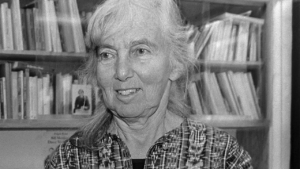 Ruth Hubbard Ruth Hubbard, the first woman to get tenure in Harvard University’s biology department, did major work on the biochemistry of vision. Her major contribution, however, was as a feminist critic of science, and advocate for women and people of color in the STEM fields.
She examined in detail how the absence of women, people of color and working class people in science and medicine distorted these fields. She demolished biological theories about gender inequality by exposing their bias towards wealthy men.
In 1941 Hubbard studyed biochemistry at Radcliffe. This women’s college shared a faculty with Harvard University, but had a different campus. Harvard professors taught their male students, then came to Radcliffe and repeated their lecture to the women. Hubbard noted the professors’ disdain for the women, and their view that teaching women was a indignity and a burden. But Hubbard felt she was lucky to be taught by “Harvard’s great men.”
After earning her doctorate at Radcliffe, she became a top researcher at Harvard, working with her husband, George Wald, in identifying how the eye pigment rhodopsin assists in absorbing light. She noted that women were not granted tenure while men were, but she thought, “Oh, well, Harvard lets us work here. Isn’t that nice of them?’” She said, “I really thought men were smarter, more interesting, better company.”
However, her participation in the 1960s against the U.S. war in Vietnam changed her view, she said. She saw with new eyes the examples of science around her–namely bombs and chemical and gas defoliants used in Vietnam.
“It just became imperative not to close my eyes to the fact that science is part of the social structure.”
The women’s movement of that time, which questioned traditional knowledge and exposed its male bias, also resonated with her when she saw a demonstration criticizing the discrimination against women in science. It was a eureka moment.
“I was a scientist. And they allowed me to work at Harvard. So how come there was discrimination?” Her interest in rhodopsin disappeared, and what she called the “pretend objectivity” of lab work. She began to study the process of scientific inquiry and inequities in science.
In 1974, due to pressure from women’s groups, Hubbard became the first woman at Harvard to be tenured in biology. It would take 10 years for a second woman to be tenured in biology.
Job security allowed her to passionately pursue her new interest. She prioritized mentoring women in science careers. She taught a first-of-its kind course—Biology 109—which examined the absence of women in science and medicine and its consequences. She wrote and edited books that challenged the male paradigms in science, dissected the patterns of who gets to ask the scientific questions that set and define society’s role.
She did not mince her words. In 1981 she said “I have felt, and I still feel that Harvard is a bad place for women…Women are still socialized to sit at the feet of great men.”
These biographies were mostly drawn from 2016 obituaries in the New York Times and Scientific American.
|